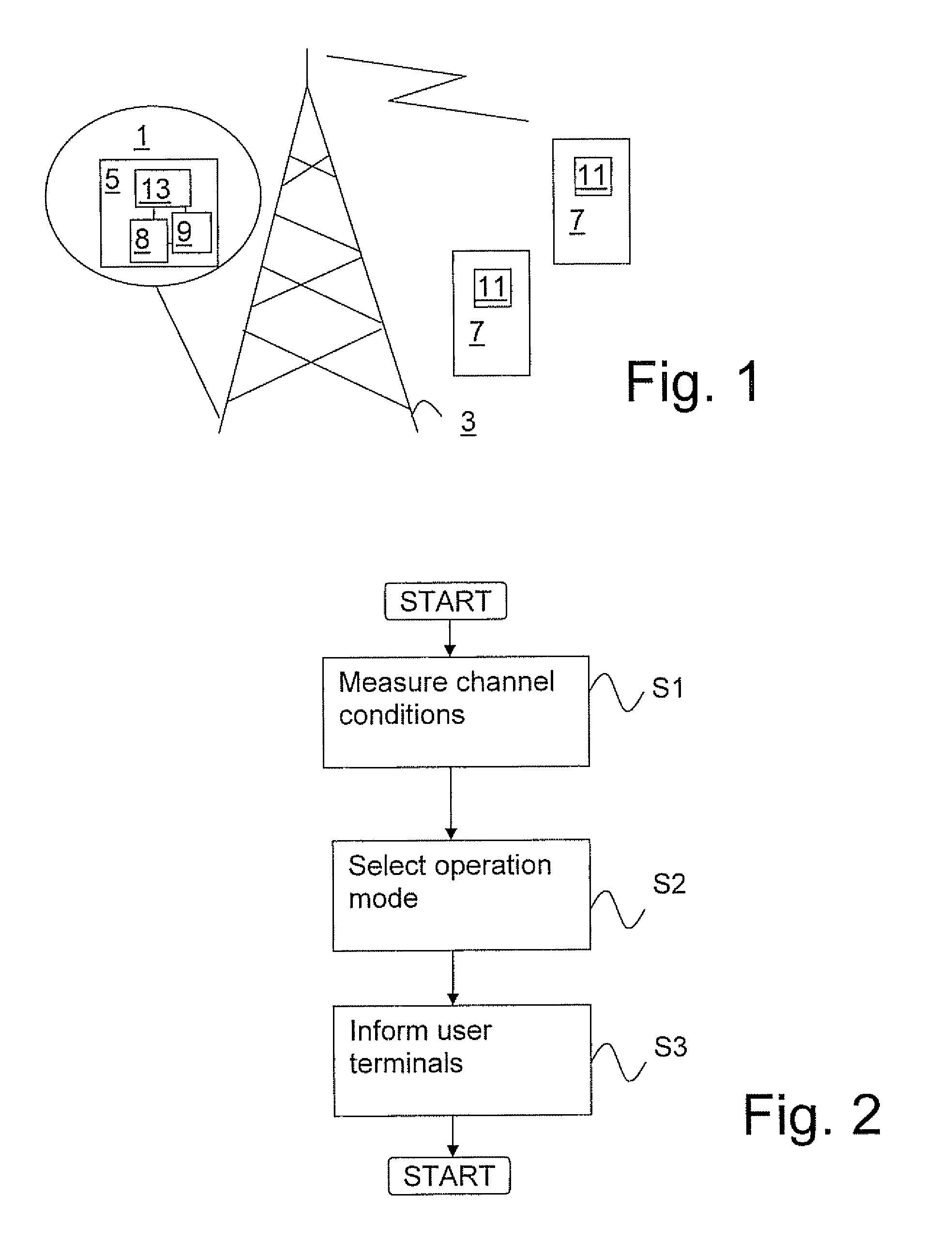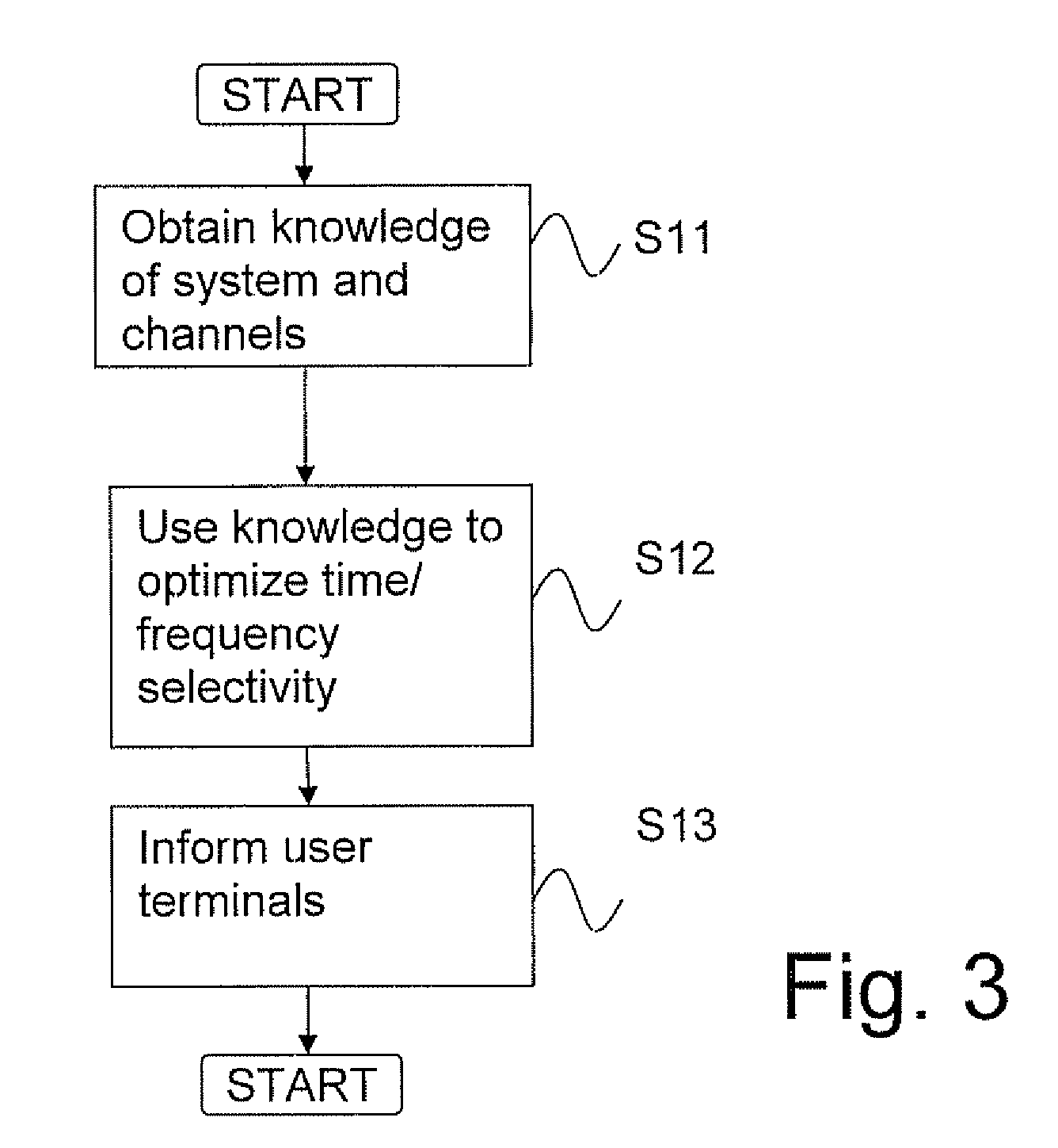Method and apparatus for improved single cell adaption due to change in environment
a technology of environment change and transmission method, applied in the direction of receiving monitoring, transmission monitoring, wireless commuication services, etc., can solve the problems of experienced channel conditions deviating further from initial assumptions, communication in the cell will not work very well, and the ability of the cellular communication system to improve. the effect of the ability
- Summary
- Abstract
- Description
- Claims
- Application Information
AI Technical Summary
Benefits of technology
Problems solved by technology
Method used
Image
Examples
Embodiment Construction
[0079]FIG. 1 shows a cellular telecommunications network 1 in which the principles of the present invention may be applied. A base station 3 is associated with, or comprises a control unit 5. The base station 3 communicates with one or more user terminals 7 in the cell through a wireless interface. The communication is affected by the layout and size of the cell, whether or not the terminals 7 are moving, and how fast, any reflecting objects that may be present in the cell, and possibly other factors. The skilled person is familiar with the factors affecting the communication in a cellular network.
[0080]The communication between the base station and the user terminals is bidirectional. Thus, both the base station 3 and the user terminals 7 comprise transmitters, receivers and control means for controlling the communication The control unit comprises a control means 8 for performing the control functions. Also, both the control unit 5 and the user terminals 7 preferably comprise moni...
PUM
 Login to View More
Login to View More Abstract
Description
Claims
Application Information
 Login to View More
Login to View More - R&D
- Intellectual Property
- Life Sciences
- Materials
- Tech Scout
- Unparalleled Data Quality
- Higher Quality Content
- 60% Fewer Hallucinations
Browse by: Latest US Patents, China's latest patents, Technical Efficacy Thesaurus, Application Domain, Technology Topic, Popular Technical Reports.
© 2025 PatSnap. All rights reserved.Legal|Privacy policy|Modern Slavery Act Transparency Statement|Sitemap|About US| Contact US: help@patsnap.com



